and / and
Cecilie Bendixen (DK), Olaf Holzapfel (DE), Ingo Mittelstaedt (DE),
Nathan Peter (US), Elisa Strozyk (DE)
March 22 – April 26, 2014 (Easter closed)

And/and further elaborates on Another Space’s interest in textile art and architecture, earlier investigated in the exhibition and subsequent publication Textile Spaces (2013). But rather than focusing on textile as material, this exhibition is concerned with textile as logic and spatiality. The term soft – or fuzzy – logic is related to the uncertain and double nature of textiles, and can be illustrated through the fold’s characteristic as both an outside and an inside, as boundary and space in a single gesture. Similarly, fuzzy logic points to the act of losing and loosening focus (1) and a blurring of boundaries between conventional opposites such as hard and soft, organic and geometric.

The works by the participating artists and designers range from the concrete and functional to the abstract and representational, from the everyday to the utopian. Whether it is through fabrics, acrylic glass, wood or photography, the artists share an attention to materiality and the behavioural properties of textile or the textile-like. The exhibited works all inhabit an ambiguity and plurality that imply a positioning in terms of understanding the world. They all challenge our expectations of materials and categories and encourage us to see the world through this logic, where there is no ‘either/or’, but rather ‘and/and’.
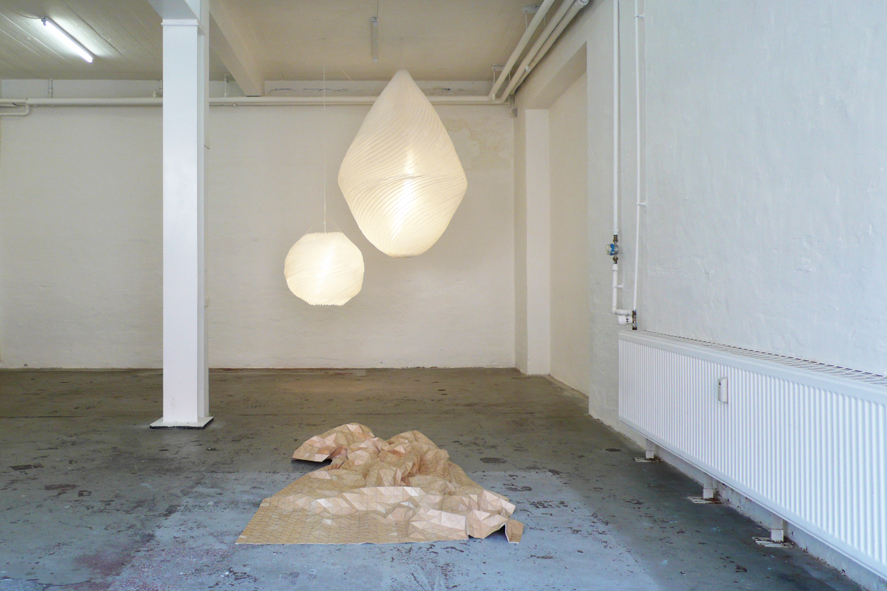
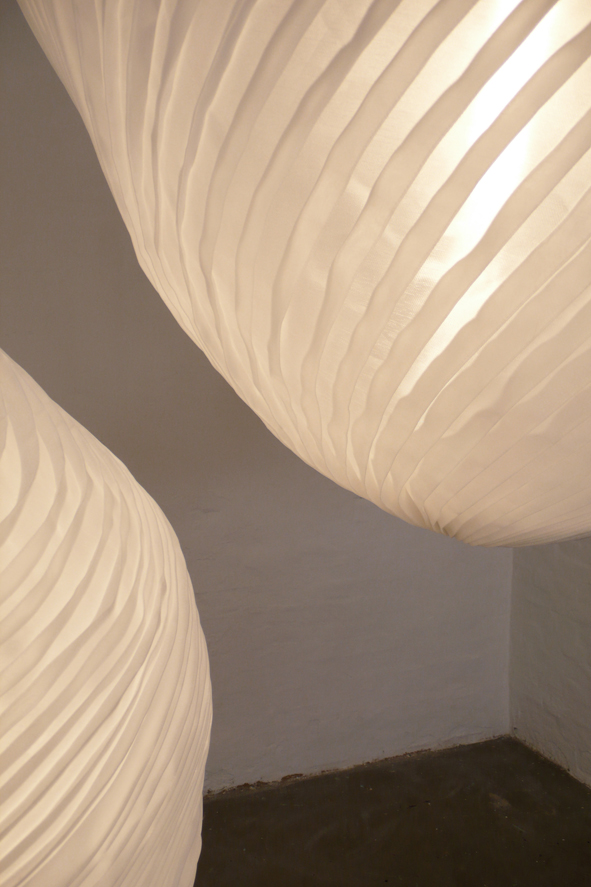
Architect Cecilie Bendixen’s lamps Hurricane Eye have a double function as light source and acoustic regulation. They are made up entirely from a polyester fabric, with no supportive frame. Their shape is held solely by the seams that fix the folds – folds that increase the surface area and thus strengthen the sound absorbing effect. This method also creates a three dimensional surface pattern, where the folds at the same time become ornament and construction. In this sense the lamps disguise their complexity of multiple and invisible functions, that we consciously or not may sense through hearing.
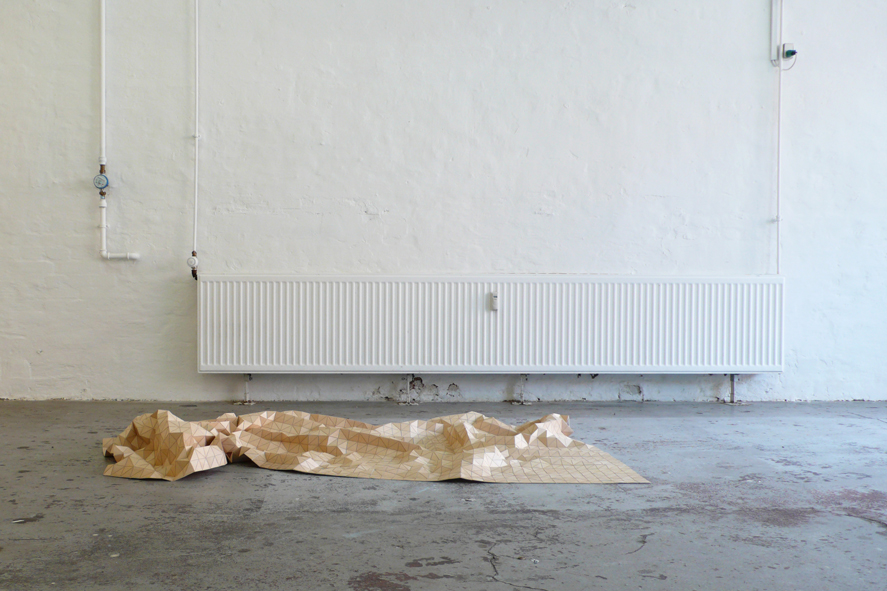
Designer Elisa Strozyk also applies her investigations to a well-known interior object – the carpet. By attaching small pieces of wood to a fabric base she gives the carpet a new kind of material behaviour. Her wooden textiles combine stiffness with flexibility and are simultaneously geometric and fluid, hard and soft. The surface is easily moved and formed in unexpected ways, shifting between flat and numerous three-dimensional states. With its different feel, look, smell and behaviour, the familiar everyday object is estranged and challenges our conception of what a carpet can be.
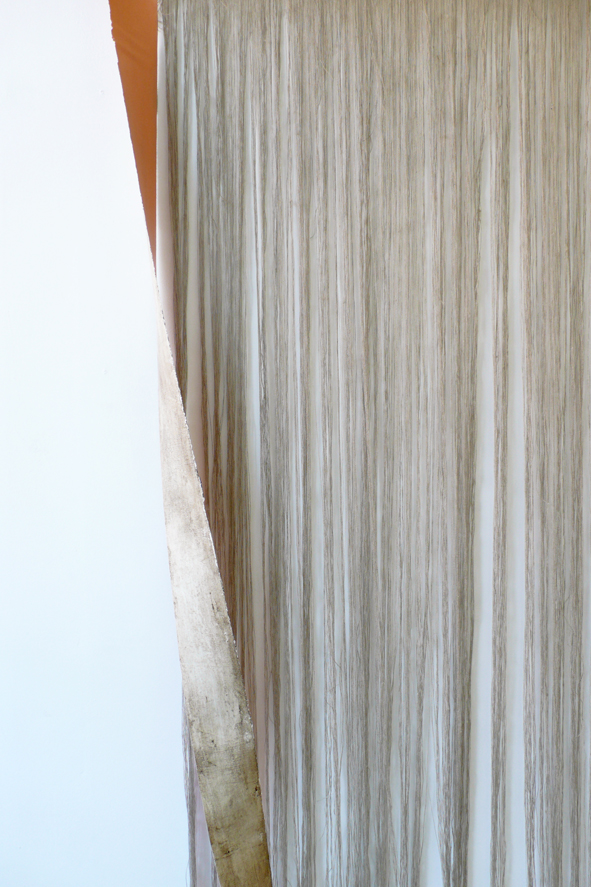
In the wall hanging Stop saying pink, start saying orange Nathan Peter has removed the linen canvas from its stretcher and focused our attention to the materiality of the painting. The 10 cm wide edge that was wrapped around the back of the stretcher is painted in a shade that wavers between pink and orange, creating a new frame for the canvas. The remaining surface is left raw, unpainted and partly unravelled. Peter plays with the canvas’ properties and the conventions of traditional painting – by twisting it and bringing attention to what is normally hidden, the artwork is left in the intersection between image and sculpture.


The sculpture 3 Räume Grau 838 is made from a flat sheet of dark, semitransparent acrylic glass. By applying heat, artist Olaf Holzapfel has been able to fold it before letting it freeze into its final three-dimensional form. Through this transformation rooms are created within rooms, shaping folds that appear soft and fluid but are surprisingly hard and heavy. The sculpture is presented on a white, fibreglass table that is cast from a negative of a foam board sketch. Both the pedestal and the sculpture contain a mode of movement and change through the memories of the transformation process, tracing back to a former soft state or negative space.
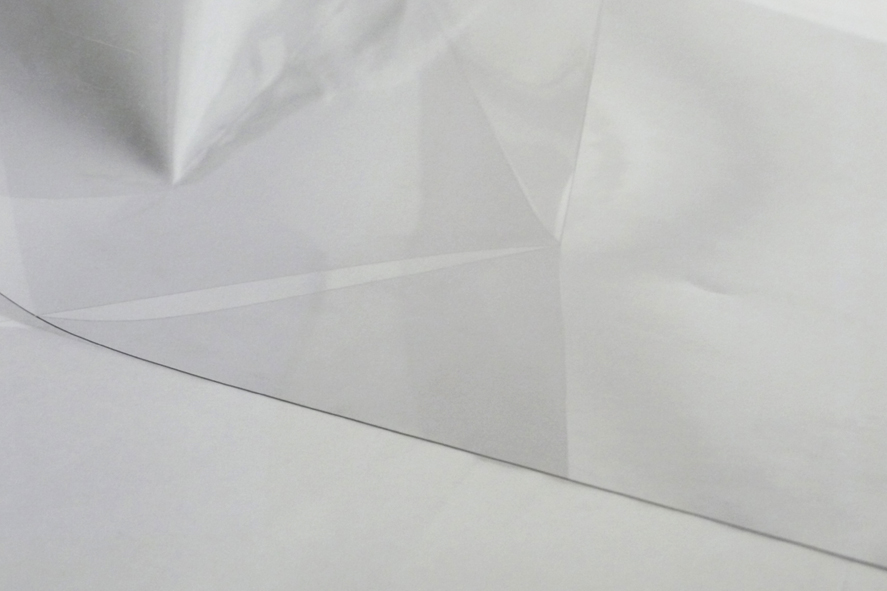
In the photographic work Loss #4, artist Ingo Mittelstaedt has arranged sheets of transparent and reflective foil in a spatial composition within a set or stage-like space. This still life is then photographed, creating a complete abstraction of the material. Our perception of object, perspective, depth and scale is manipulated or lost, and the image points to a space we can inhabit with our imagination. There is a pleasant confusion in observing the materials and their layering, transparencies and reflections, which appear extremely concrete and real, yet strangely abstract and scaleless.
Curated by Nicola Louise Markhus and Marte Danielsen Jølbo
1: Dieter Roelstrate ”The Daily Grid. Olaf Holzapfel’s Autofocus” in Das nomadische Kriterium, Dumont:2009
The exhibition is kindly supported by Danmarks Nationalbanks Jubilæumsfond af 1968
